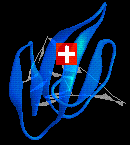

Glaxo Geneva Biomedical Research Institute, Glaxo Wellcome Research and Development, chemin de Aulx 14, 1228 Plan-les-Ouates/Geneva, Switzerland
Molecular models of proteins have recently gained much popularity among
biochemists and molecular biologists, as they have proven useful in many
instances. Indeed, the design of site-directed mutagenesis experiments
can be rationalised to a great extent by the use of theoretical protein
models.
Model building requires not only expensive computer hardware and software,
but also expert knowledge of their manipulation. Thus only a limited number
of scientists have access to these tools. To overcome these limitations we
developed the automated knowledge-based protein modelling server
SWISS-MODEL,
which allows users to build protein models based on the known three-dimensional
structure(s) of related family members.
The first operation that SWISS-MODEL performs is to identify all suitable 3D
template proteins to use for a given target sequence. This is done by
searching a database (based on the Brookhaven Protein Data Bank) using
BLAST, FastA, and SIM. The templates and target sequences are then aligned
by a combination of sequence alignment tools and 3D-superposition. Based upon
this multiple sequence alignment, a weight averaged atomic framework is
constructed for the target sequence. The subsequent steps consist of fill in
operation to complete the gaps left by the framework construction. The first
step is to rebuild the non-conserved loops from their "stems" by structural
similarity searches through the Brookhaven Data Bank. The next is to complete
the main chain using a library of backbone elements (pentapeptides) derived
from the best X-ray structures (< 2E resolution). Then follows the addition
of side chains that are not present on the template proteins, and the
correction of existing side chains, using a library of allowed rotamers.
Model refinement by energy minimisation, which is the last step in model
building, aims to produce the best possible overall stereochemistry of the
model by improving intramolecular contacts and relieving steric strain. This
is performed with the CHARMM package.
A First Approach and an Optimise mode allow the user to submit a sequence or
a sequence alignment respectively. In the first mode, SWISS-MODEL will go
through the whole procedure described above, while in Optimise mode the
template selection and sequence alignment steps are skipped.
Generating models for the transmembrane region of G-protein coupled receptors
is made possible through the
SWISS-MODEL 7TM
interface.
More recently we have started to use the software framework of SWISS-MODEL for
large scale protein modelling of the sequences contained within SWISS-PROT.
These models, most of which are the result of a First Approach mode request,
are annotated, indexed and stored in the
SWISS-MODEL
Repository. The index can be searched and the models downloaded via
the Internet.
SWISS-MODEL is implemented on the ExPASy Molecular Biology Web Server and
requests can be submitted via easy to fill forms at this URL:
http://expasy.hcuge.ch/swissmod/SWISS-MODEL.html.
The results of all modelling requests are returned to the user by Email.